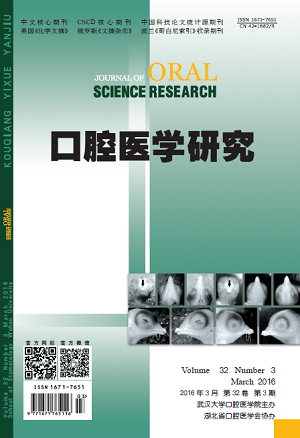|
|
Effects of LPS on Expression of RANKL/OPG and IL-6 in Mouse Osteocytes in Vitro.
YU Ke,WU Xiang-lan,LIU Wen-jia,WANG Hang
2016, 32(3):
220-223.
DOI: 10.13701/j.cnki.kqyxyj.2016.03.003
Objective: To observe the effects of LPS on the expression of RANKL/OPG and IL-6 in MLO-Y4 cells in vitro. Methods: Cells were stimulated with 5 mg/L LPS and the proliferation of the cells was observed at different time points (12, 24 and 48 h) by CCK-8. Then cells were stimulated with various concentrations of LPS (1, 10, 100, 500 and 1000 μg/L) and RT-PCR was performed to detect the relative expression of RANKL/OPG and IL-6 after 4 h and 1.5 h, respectively. Cells were stimulated with 100 μg/L LPS and relative expression of RANKL/OPG and IL-6 was detected at different time points (0.5, 1, 2, 4 and 8 h) or (0.5, 1, 1.5, 2 and 4 h) respectively by RT-PCR. Results: There was no influence of LPS on the proliferation of MLO-Y4 cells. Relative expression of RANKL and IL-6 was significantly up-regulated in MLO-Y4 cells stimulated with 100, 500 and 1000 μg/L LPS, respectively. When stimulated with 100 μg/L LPS, relative expression of RANKL and IL-6 was up-regulated at all time points except 0.5 h, and RANKL reached peak at 4 h, while IL-6 at 1.5 h. There was no influence of LPS on relative expression of OPG in all samples. Conclusion: Expression of RANKL and IL-6 was up-regulated in MLO-Y4 cells in the presence of a certain concentration of LPS, however, OPG was not intervened.
References |
Related Articles |
Metrics
|

